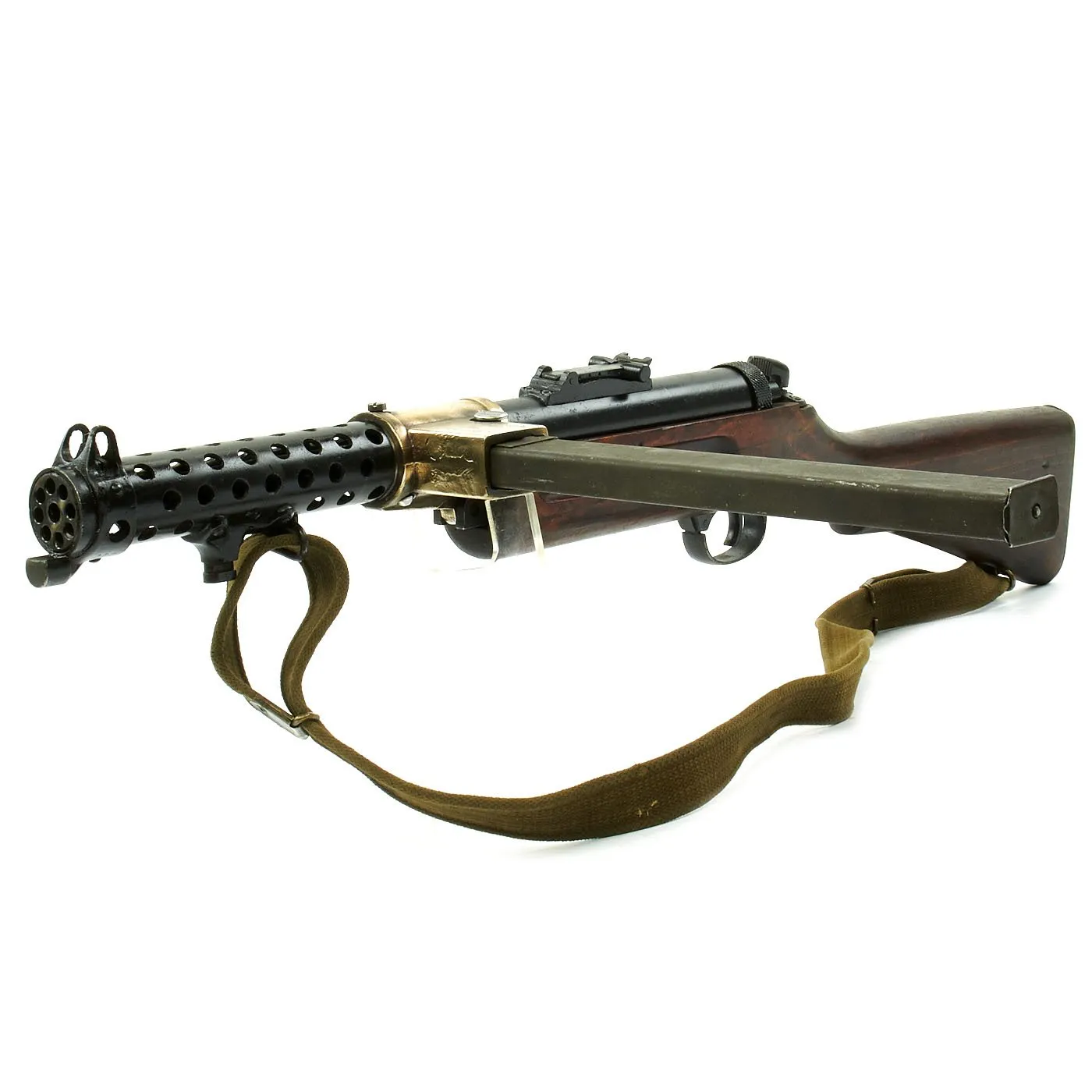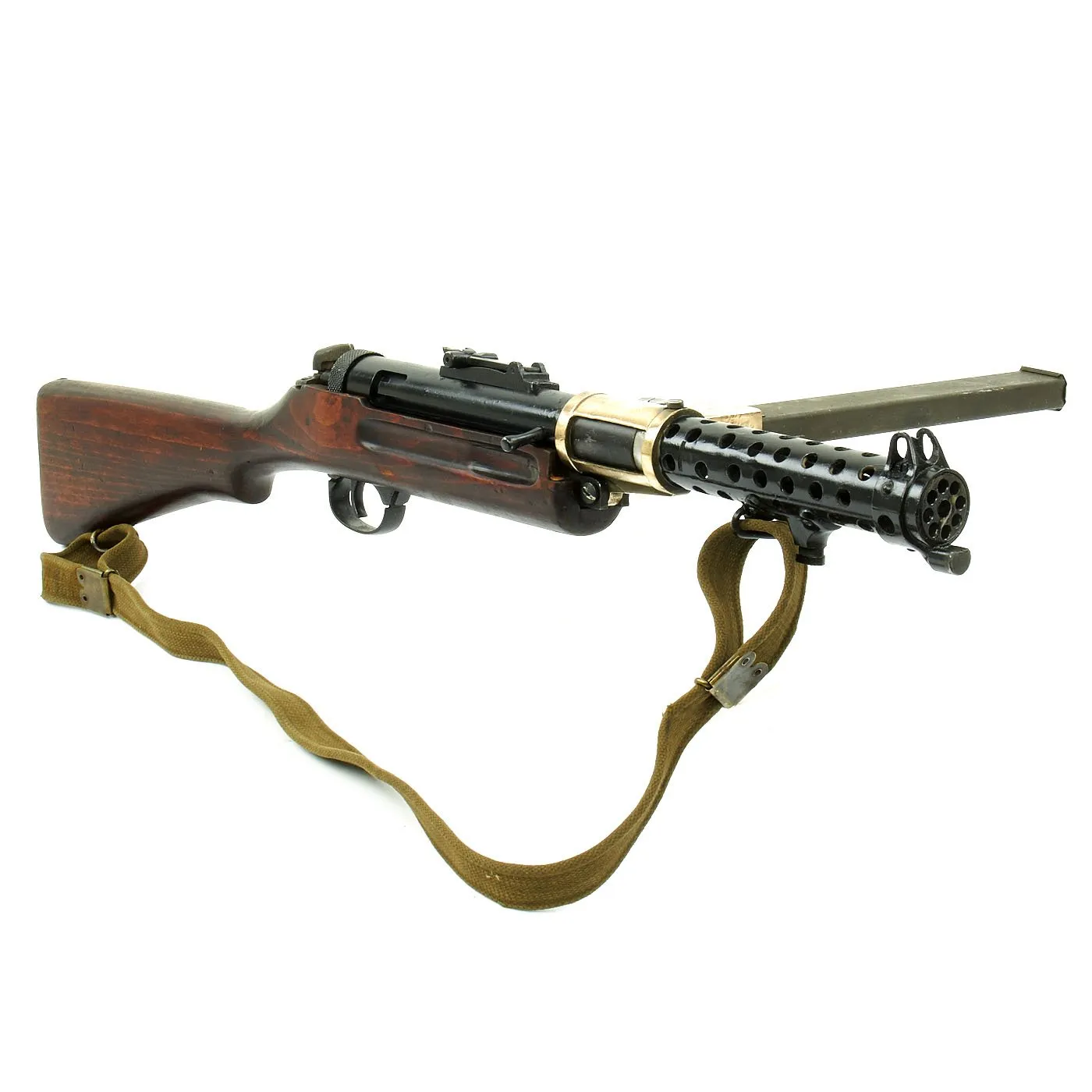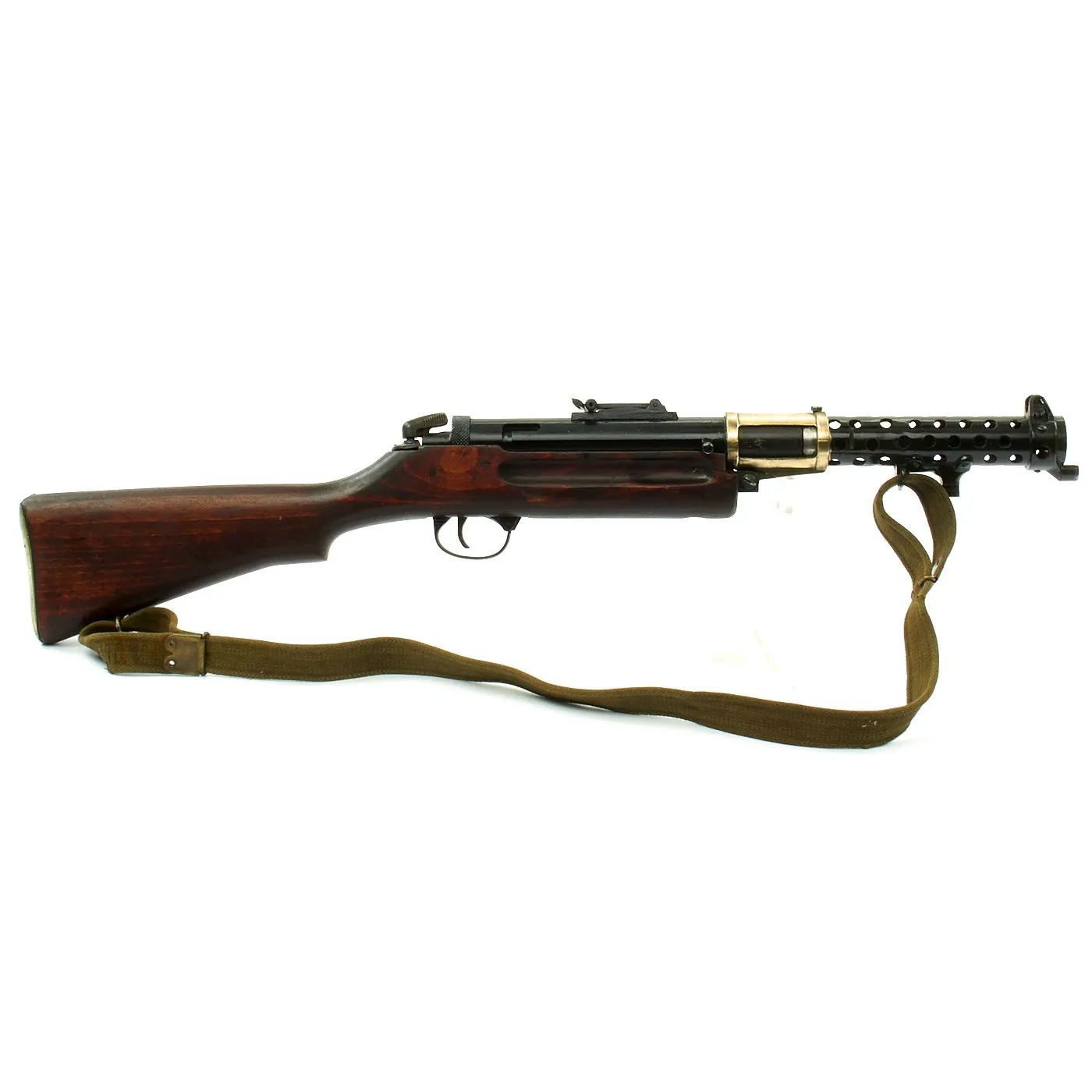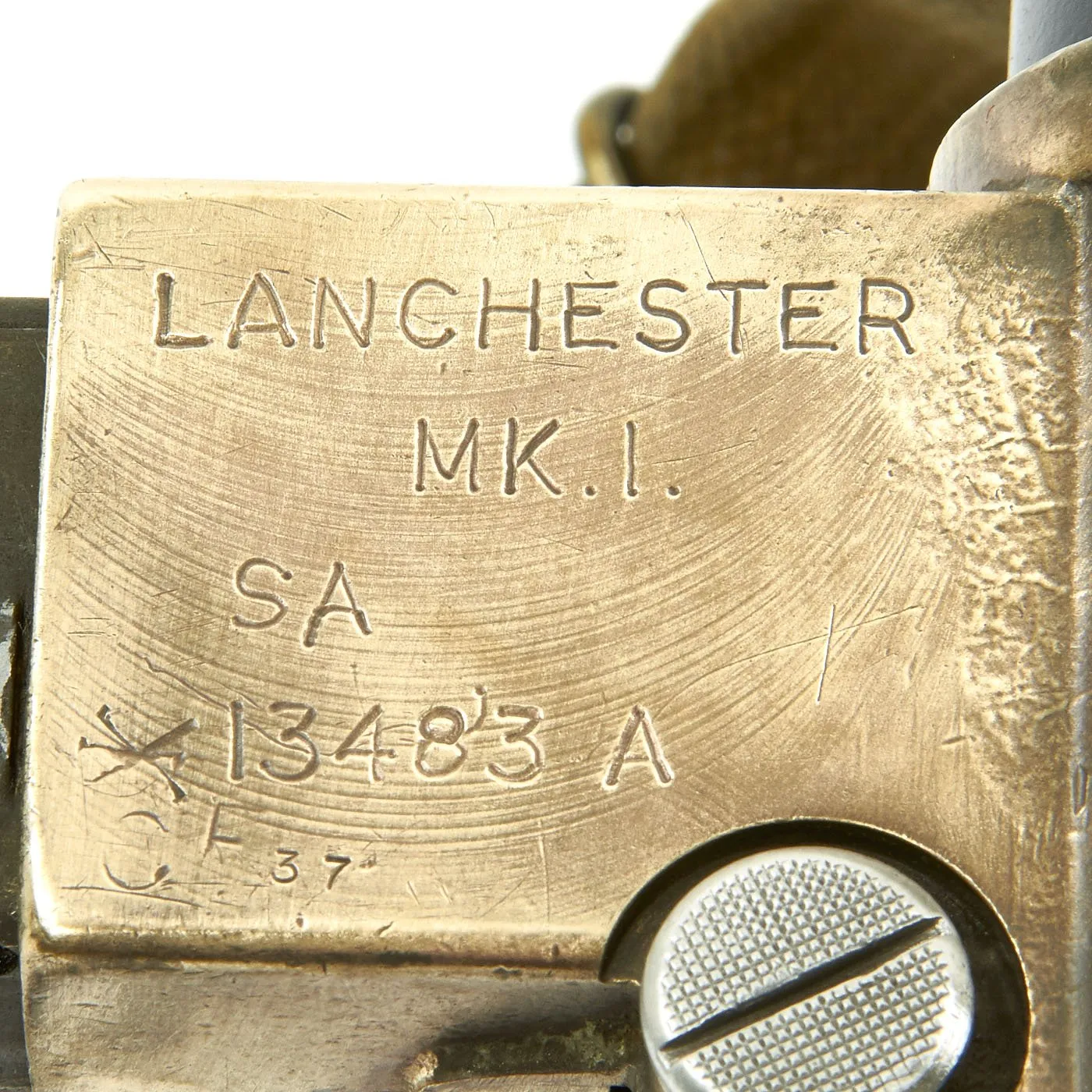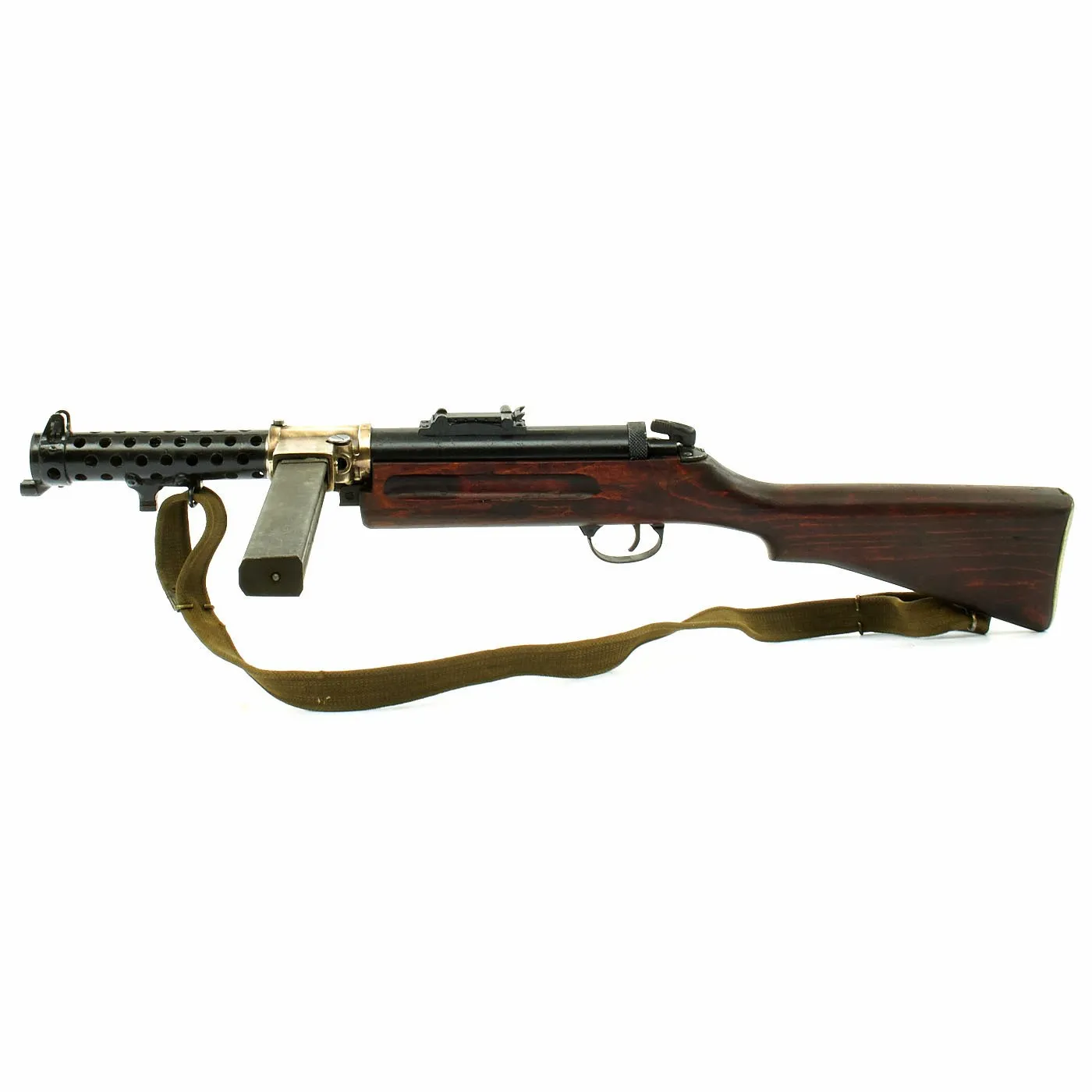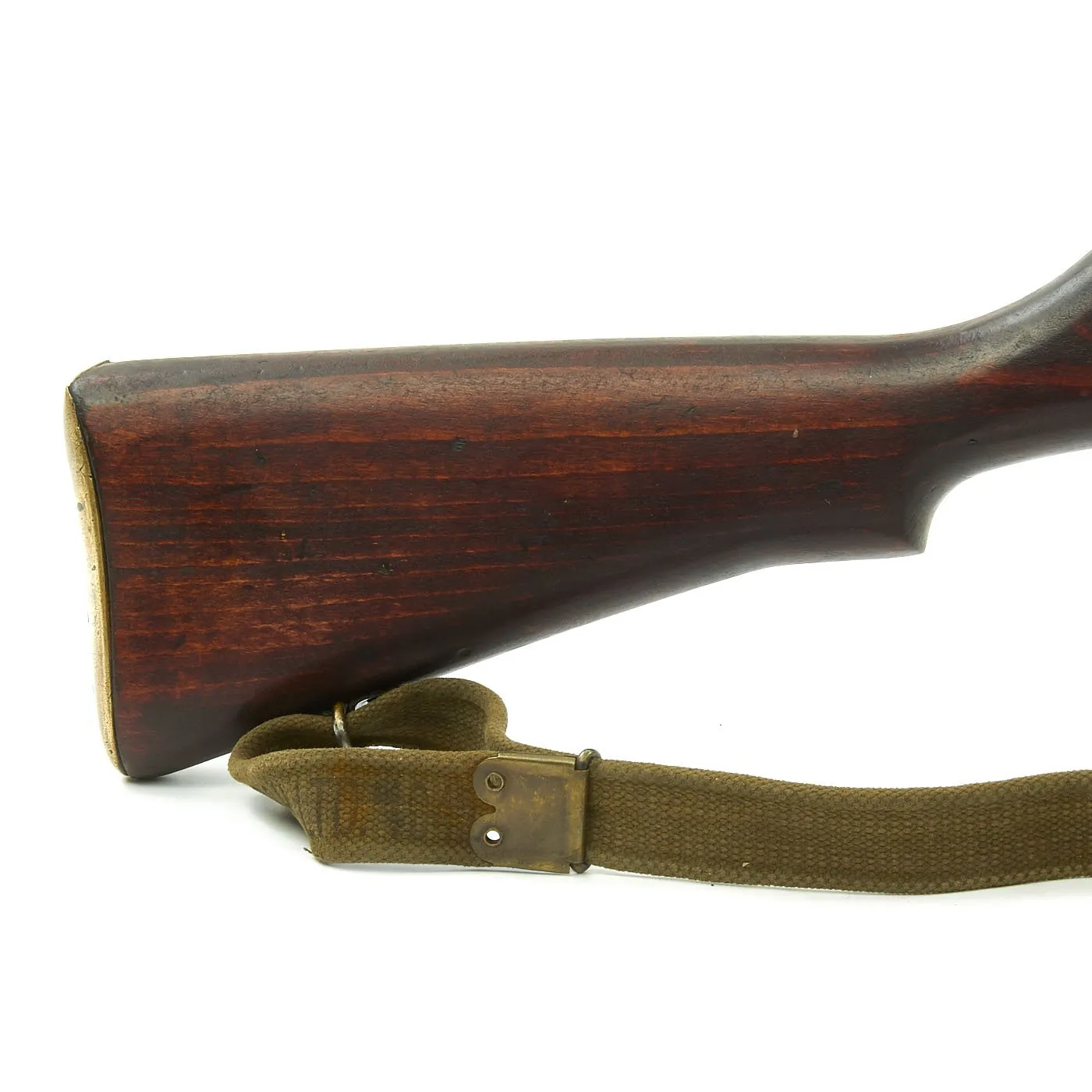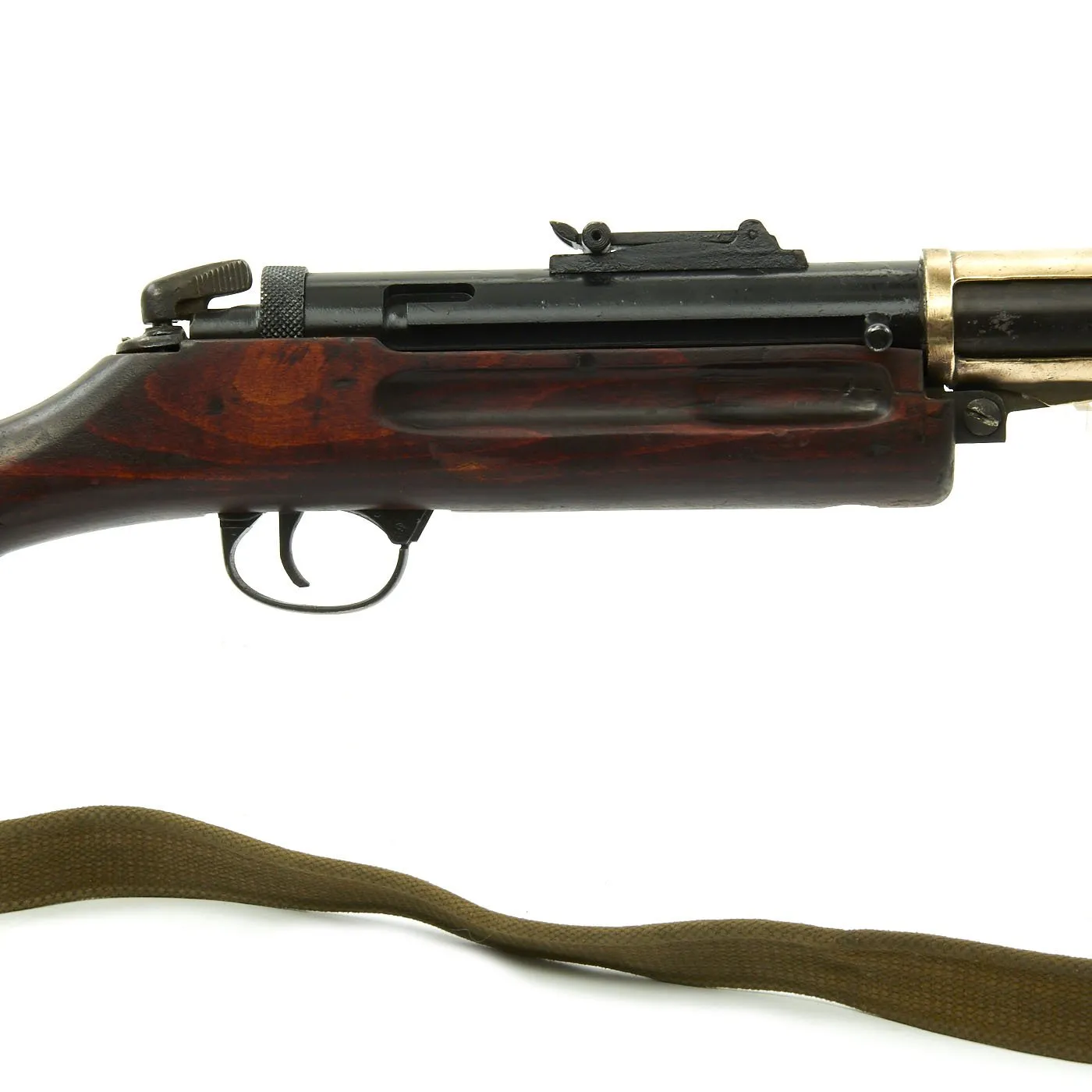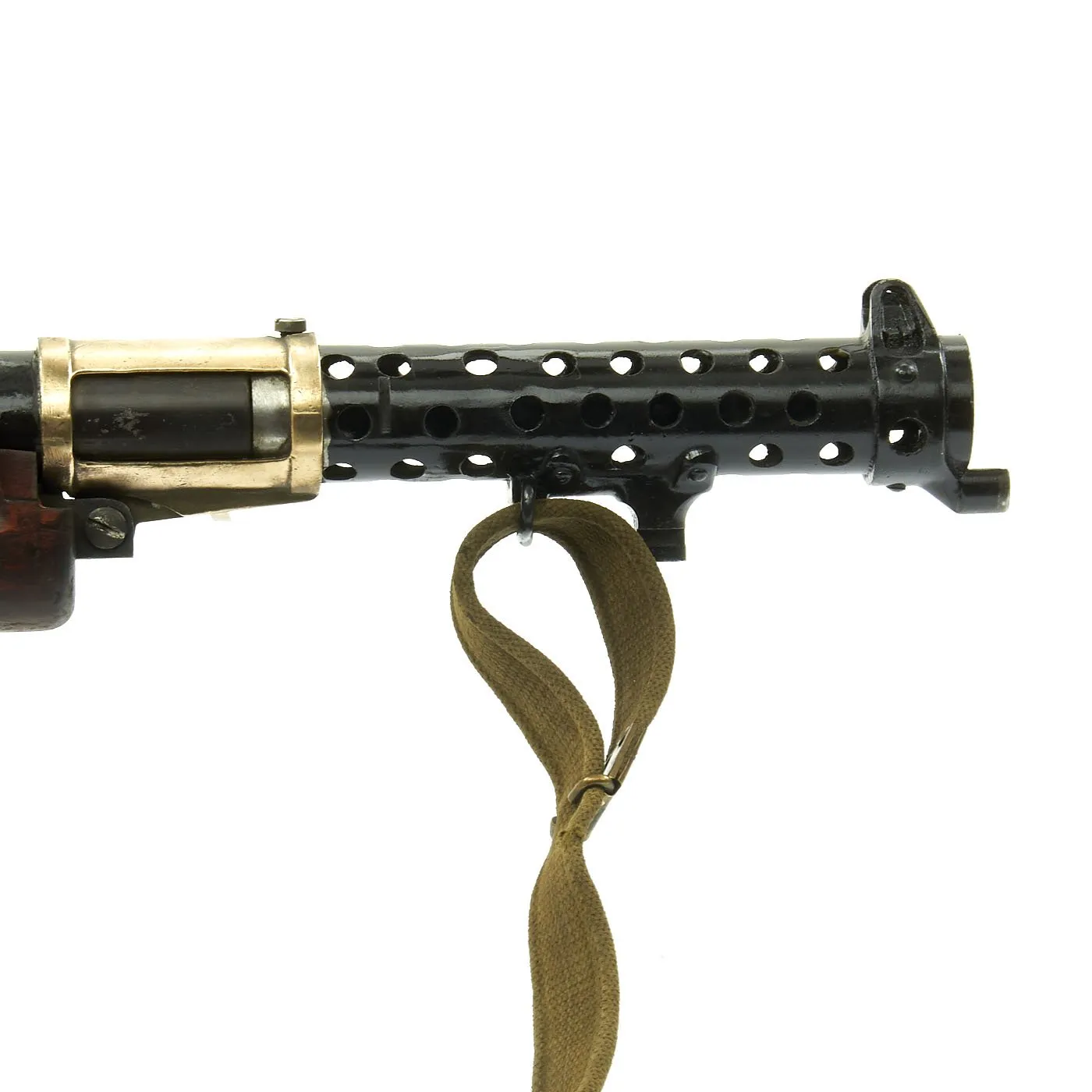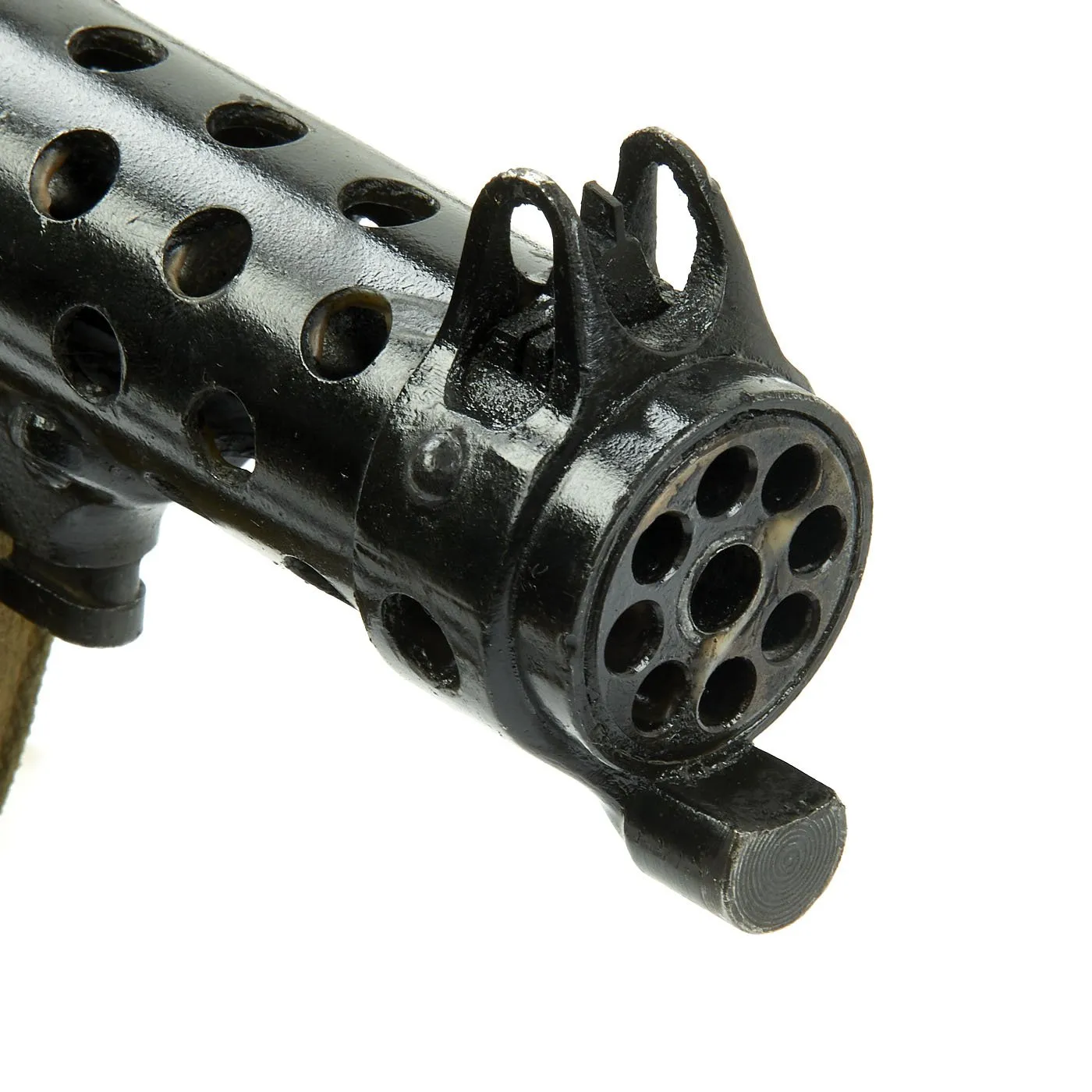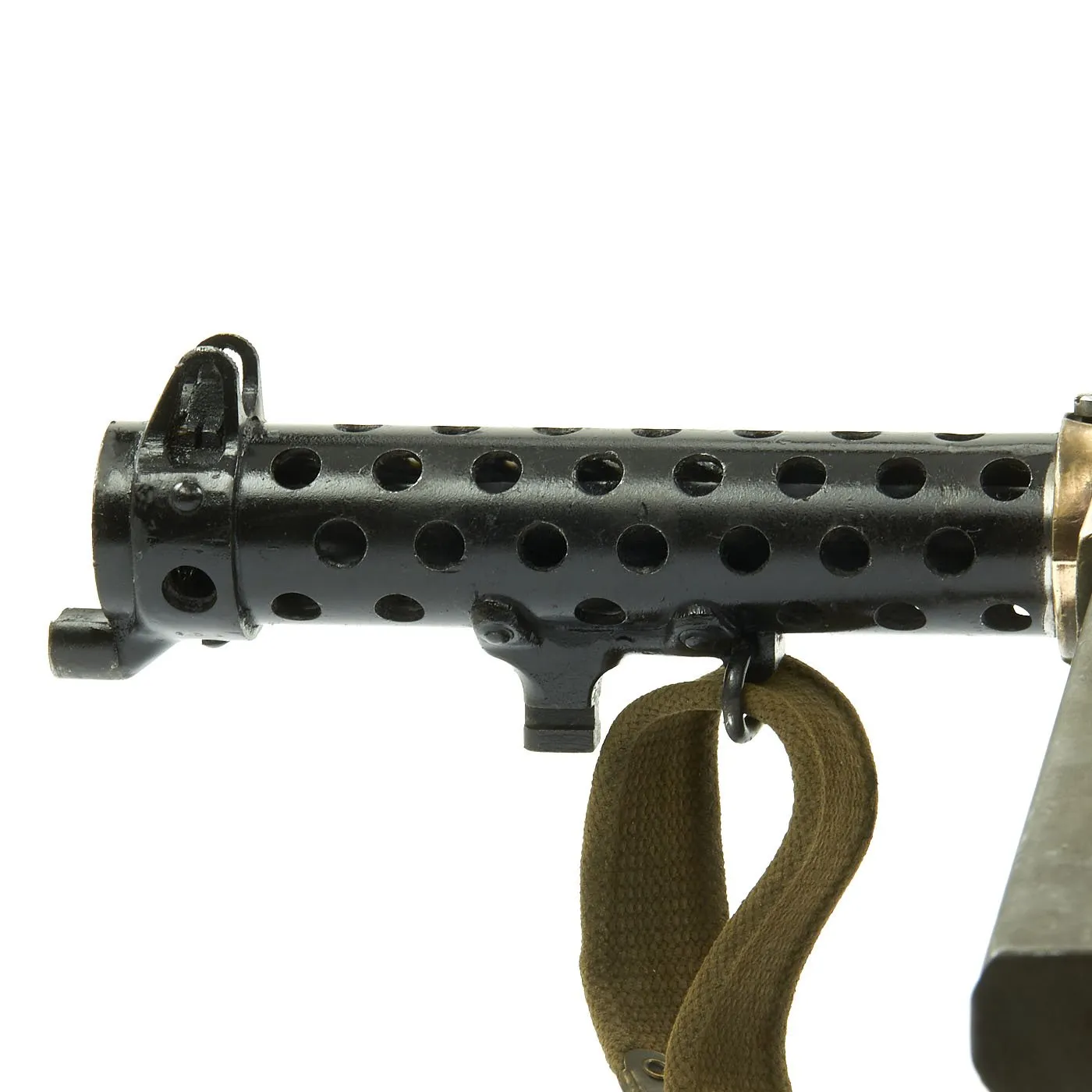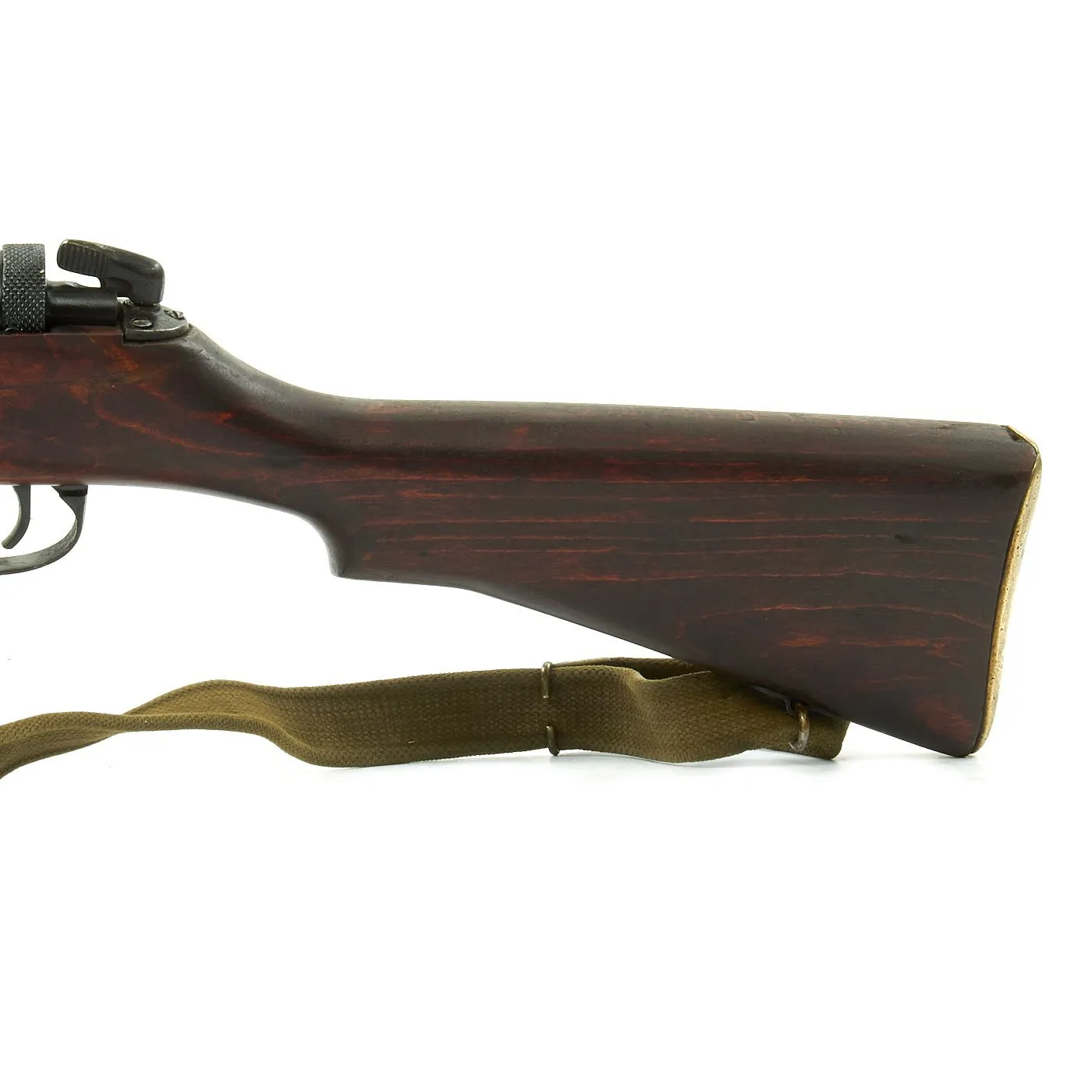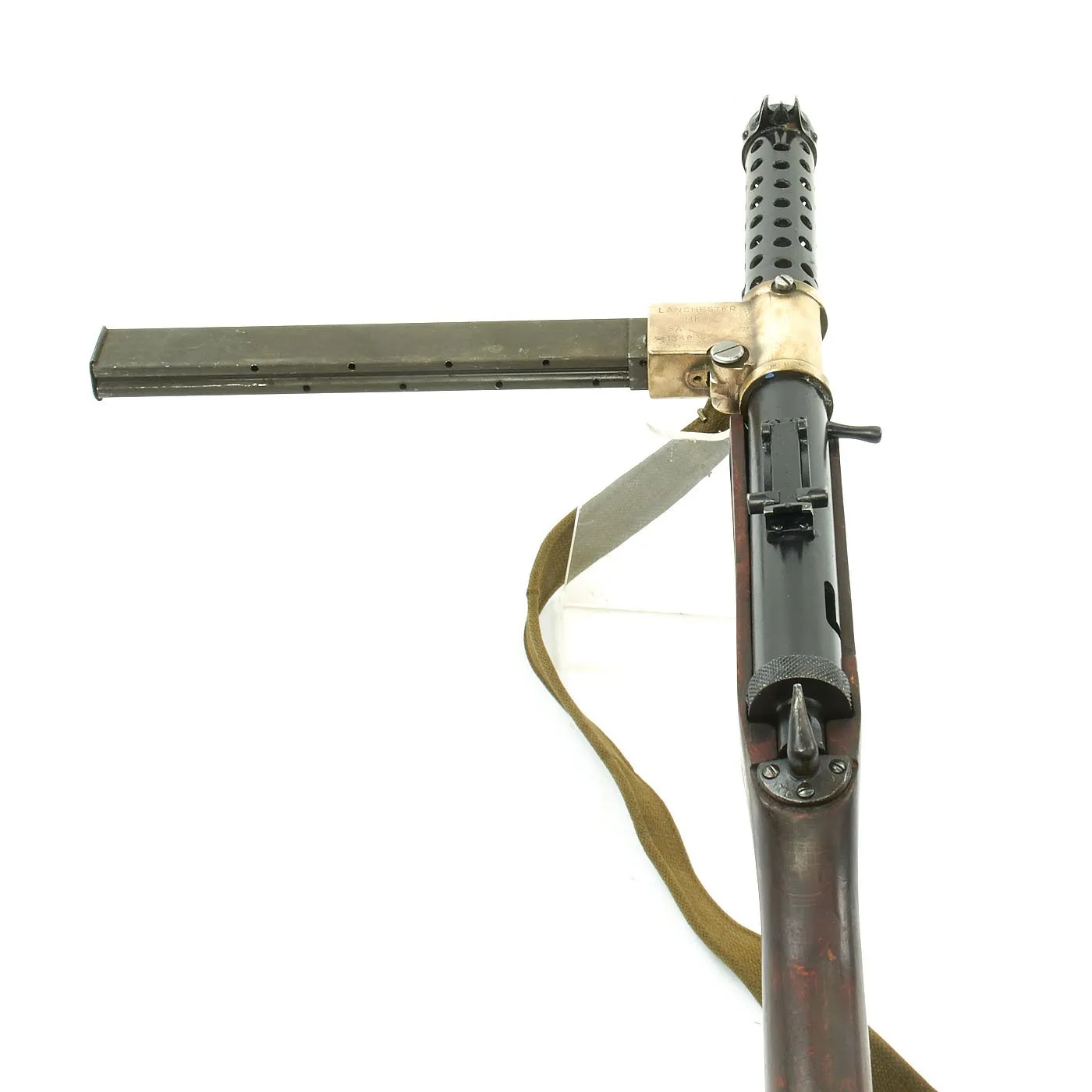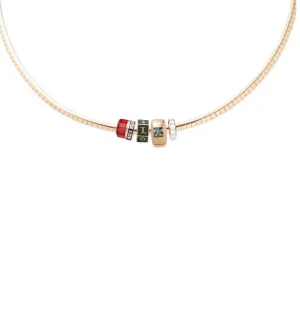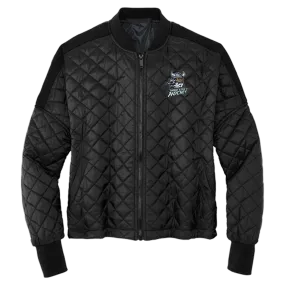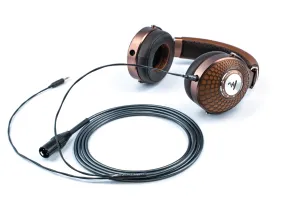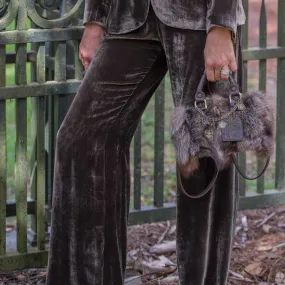This example is offered in very good condition and is built on an ATF compliant non-firing solid aluminum dummy receiver. It is nicely marked on the magazine housing:
LANCHESTER
MK.I
SA.
13484 A
Also included ids a rare 50 round magazine (where permitted) and a web Enfiled WW2 dated sling.
The Lanchester is a submachine gun (SMG) manufactured by the Sterling Armaments Company between 1941 and 1945. It is a copy of the German MP28/II and was manufactured in two versions, Mk.1 and Mk.1*; the latter was a simplified version of the original Mk.1, with no fire selector and simplified sights. It was primarily used by the British Royal Navy during the Second World War, and to a lesser extent by the Royal Air Force Regiment (for airfield protection). It was given the general designation of Lanchester after George Herbert Lanchester, who was charged with producing the weapon at the Sterling Armaments Company.
Following the Dunkirk evacuation in 1940, the Royal Air Force decided it required a submachine gun for airfield defence. With no time available for the usual research and development of a new weapon, it was decided to create a direct copy of the German MP 28. The British Admiralty decided to join with the RAF in adopting the new weapon, and played a key role in its design. Ultimately, it was within the Royal Navy that most of the Lanchesters that were produced went into service.
The British copy of the MP28 was given the general designation of Lanchester after George Herbert Lanchester, who was charged with producing the weapon at the Sterling Armaments Company, the same company that later produced the Sterling submachine gun.
The Lanchester was envisioned as a weapon used for guarding prisoners and accompanying naval landing and assault parties. It was a very solid, well-made submachine gun of high-quality materials, in many ways the complete opposite of its direct contemporary, the Sten.
The Lanchester had a heavy wooden butt and stock, a machined-steel action and breech block, a magazine housing made from solid brass[3] (later steel) and a mounting on the muzzle for use of a long-bladed 1907 bayonet. The rifling differed from the German original in details to accommodate various lots of 9mm ammunition then being acquired for service use.
Produced in two versions, Mk.1 and Mk.1*. The Mk.1* was a simplified version of the original Mk.1, which omitted the fire mode selector (full automatic only) and used simplified sights.




